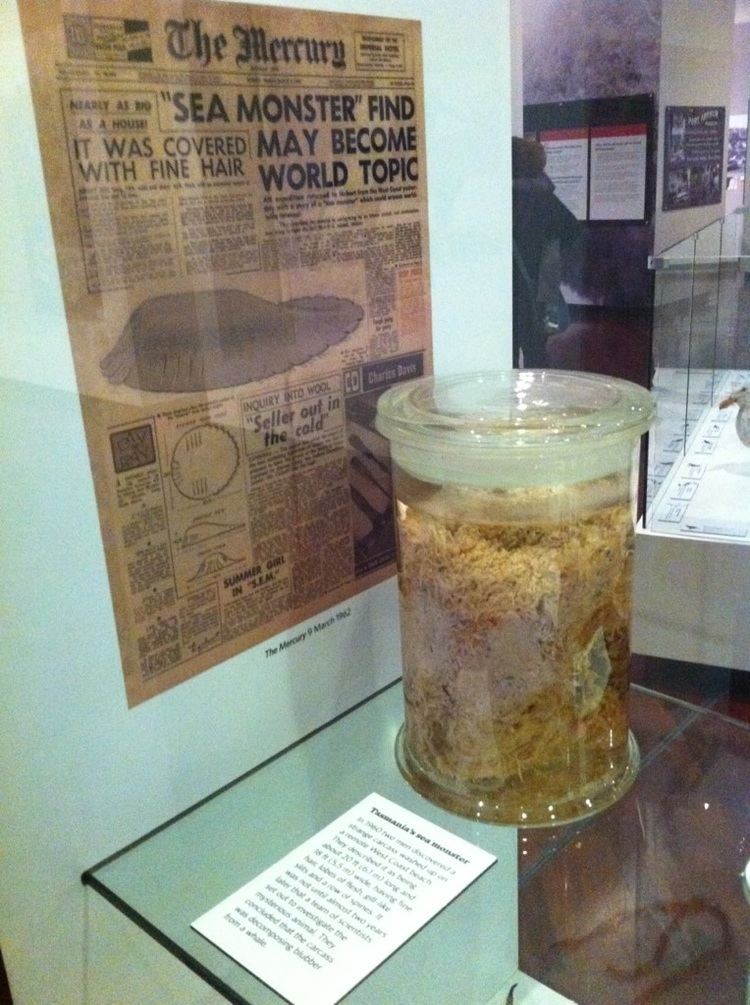 | ||
The Tasmanian Globster was a large unidentified carcass that washed ashore in western Tasmania, in August 1960. It measured 20 ft (6.1 m) by 18 ft (5.5 m) and was estimated to weigh between 5 and 10 tons. The mass lacked eyes and in place of a mouth, had "soft, tusk-like protuberances". It had a spine, six soft, fleshy 'arms' and stiff, white bristles covering its body.
The carcass was identified as a whale by L.E. Wall in the journal Tasmanian Naturalist in 1981, and a later electron microscopy analysis of the collagen fibers confirmed this.
The term globster was coined in 1962 by Ivan T. Sanderson to describe this carcass and the name Sea Santa, coined by another journalist in the same year.
Second carcass
A similar find was reported by Ben Fenton, one of those involved in the earlier find, in 1970. It was buried in the sand, but the visible part was 8 ft (2.4 m) long. Pictures taken of this carcass have since gone missing.
